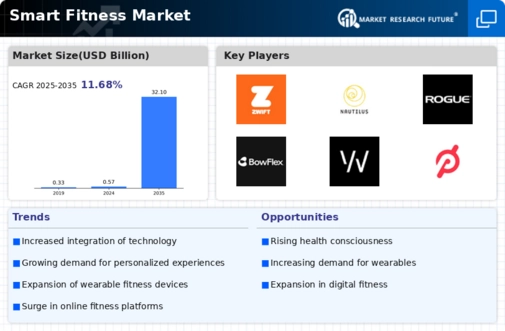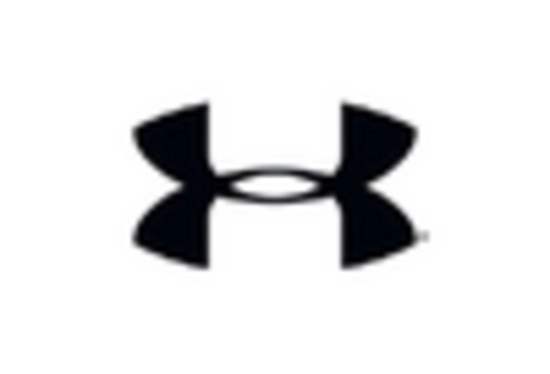Increased Health Awareness
The Smart Fitness Market is experiencing a surge in demand driven by heightened health awareness among consumers. Individuals are increasingly prioritizing their physical well-being, leading to a growing inclination towards fitness solutions that are both effective and convenient. This trend is reflected in the rising sales of smart fitness devices, which are projected to reach a market value of approximately 30 billion dollars by 2026. As consumers become more informed about the benefits of regular exercise and healthy living, the Smart Fitness Market is likely to expand further, catering to a demographic that seeks innovative ways to monitor and enhance their fitness levels.
Technological Advancements
Technological advancements play a pivotal role in shaping the Smart Fitness Market. Innovations in artificial intelligence, machine learning, and data analytics are enabling the development of sophisticated fitness applications and devices. These technologies allow for personalized workout plans and real-time health monitoring, which are increasingly appealing to consumers. The integration of smart technology into fitness equipment is expected to drive market growth, with projections indicating a compound annual growth rate of over 23% in the coming years. As technology continues to evolve, the Smart Fitness Market is poised to benefit from enhanced user experiences and improved fitness outcomes.
Focus on Preventive Healthcare
The Smart Fitness Market is increasingly aligned with the focus on preventive healthcare. As healthcare costs continue to rise, consumers are becoming more proactive about their health, seeking solutions that can help them maintain fitness and prevent chronic diseases. This trend is reflected in the growing adoption of smart fitness devices that monitor vital signs and provide actionable insights. Market Research Future indicates that the preventive healthcare sector is expected to grow significantly, which bodes well for the Smart Fitness Market. By promoting healthier lifestyles, smart fitness solutions are likely to play a crucial role in reducing healthcare burdens.
Rise of Health and Fitness Apps
The proliferation of health and fitness applications is significantly influencing the Smart Fitness Market. These apps provide users with a variety of features, including workout tracking, nutrition guidance, and community support. Recent statistics suggest that the number of fitness app downloads has surpassed 1 billion, indicating a strong consumer interest in digital fitness solutions. As more individuals turn to their smartphones for fitness guidance, the Smart Fitness Market is likely to see an increase in partnerships between app developers and fitness equipment manufacturers, creating a more integrated fitness ecosystem.
Growing Popularity of Home Workouts
The Smart Fitness Market is witnessing a notable shift towards home workouts, a trend that has gained momentum in recent years. With the proliferation of smart fitness equipment and online workout platforms, consumers are finding it more convenient to exercise at home. This shift is supported by data indicating that nearly 60% of fitness enthusiasts prefer home workouts due to flexibility and accessibility. As a result, the Smart Fitness Market is adapting to meet the needs of this growing segment, offering a range of products designed for home use, including smart weights, interactive fitness mirrors, and virtual coaching services.


















Leave a Comment